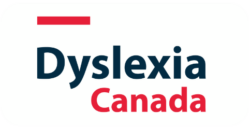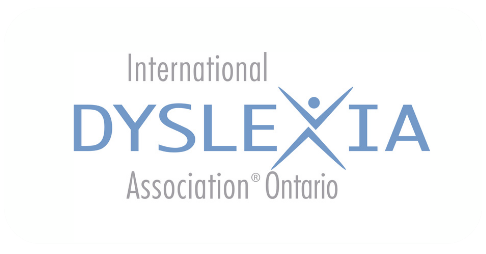Continuum des notions fondamentales de la lecture et de l’écriture
de la 1ʳᵉ à la 4ᵉ année, attente B2
Thèmes
Mes en application des connaissances des correspondances phonèmes-graphèmes
L’apprentissage des correspondances graphèmes-phonèmes (soit la relation entre les lettres [graphèmes] de la langue écrite et les sons distinctifs [phonèmes] de la langue orale) s’appuie sur la conscience phonémique et la maîtrise du principe alphabétique.
Connaissances et habiletés
Annexe A
Voir tous les détails dans ce document: Annexe A. Continuum des notions fondamentales de la lecture et de l’écriture, de la 1ʳᵉ à la 4ᵉ année, attente B2.
Développement
En augmentant la précision et l’automaticité en lecture, et en faisant les liens entre la phonétique et la conscience phonémique, les élèves sont capables de lire une grande variété de mots de structures syllabiques différentes. Les mots d’une seule syllabe avec des structures simples sont plus faciles; les mots deviennent de plus en plus complexes, y compris les mots multisyllabiques.
L’orthographe au niveau des mots se développe graduellement. Grâce à un enseignement explicite, l’élève apprendra que chaque son est relié à une lettre (ou plus). La conscience phonémique et le principe alphabétique contribuent à la lecture et à l’orthographe. Lorsque l’élève devient plus habile avec la fusion et la segmentation des sons, sa lecture et son orthographe deviendront plus faciles.
Importance
L’utilisation de la phonétique et de la conscience phonémique est essentielle pour le décodage (la lecture) et l’encodage (l’orthographe) ainsi que la compréhension de la lecture et la rédaction de textes.
Pour comprendre un texte, les élèves doivent le lire avec fluidité et reconnaître les mots sans effort. Auparavant, on croyait que les mots étaient mémorisés comme des unités visuelles entières. Au contraire, les mots sont stockés pour être repérés plus tard grâce à l’analyse de la séquence des phonèmes, des graphèmes et du sens (Ehri, 2022). La mise en application de la phonétique et de la conscience phonémique à la lecture et à l’orthographe est primordiale pour reconnaître les mots sans effort.
Pour les lecteurs et les lectrices en herbe, il est important de continuer à utiliser les compétences de décodage lorsqu’on travaille avec des textes complexes comportant des mots multisyllabiques. Les mots comportant de nombreuses syllabes sont généralement porteurs de sens dans les textes reliés aux matières académiques (Honig et al. 2018), de sorte que les élèves bénéficient de compétences solides de décodage pour comprendre les textes dans plusieurs domaines et disciplines.
Enseignement
On doit miser sur l’enseignement de la conscience phonémique. Il faut inculquer chez les élèves que travailler au niveau des sons du langage les aidera à lire et à orthographier les mots. On doit aussi les encourager de façon explicite à fusionner les sons en lecture, et à segmenter les sons en orthographe.
Étant donné que l’apprentissage de la phonétique est meilleur lorsque celle-ci est enseignée de façon systématique (PNR, 2000), il est recommandé de suivre une progression des apprentissages pour choisir les mots qui seront travaillés avec les élèves dans leur cheminement graduel en lecture et en orthographe. L’enseignement de la phonétique doit être étroitement lié aux tâches de lecture et d’orthographe des mots, ainsi que le choix des textes pour les lecteurs et les lectrices en herbe. Ces élèves devraient lire des textes décodables car ces derniers offrent une pratique ciblée des correspondances graphèmes-phonèmes que les élèves sont en train d’apprendre.
Le niveau de difficulté des mots dépend du nombre et de la séquence des sons, ainsi que la structure syllabique. Les étapes de la progression des apprentissages doivent être respectées. Celle-ci indiquera le genre de mots qui doivent être présentés. On doit tenir compte des connaissances et des habiletés phonémiques et phonétiques des élèves. Par exemple, si l’élève a appris à fusionner trois phonèmes pour lire un mot tels que /l/ /a /c/→lac, elle ou il ne sera probablement pas en mesure de lire un mot comportant cinq phonèmes tels que /p/ /a /r/ /t/ /i/→parti.
Évaluation au service de l’apprentissage
« Le but premier de toute évaluation et de la communication du rendement est d’améliorer l’apprentissage de l’élève. »
Faire croître le succès, 2010, p. 6
L’évaluation de la phonétique et du décodage offre les données nécessaires pour planifier l’amélioration des apprentissages des élèves. Diverses sources d’information peuvent être utilisées comme évaluations de la mise en application de leurs connaissances et de la compréhension de la phonétique, y compris le dépistage précoce de la lecture, les évaluations diagnostiques et le suivi des apprentissages. À partir de ces évaluations au service de l’apprentissage, il est possible de planifier et d’implanter un enseignement explicite et systématique fondé sur des données probantes.
Étant donné que la mise en application de la connaissance et de la compréhension de la phonétique permet de prédire les compétences futures en matière de lecture, l’évaluation du décodage des élèves peut se faire par le biais d’un dépistage précoce de la lecture. Quelques outils de dépistage fondés sur des données probantes comprennent des sous-tests de phonétique pour les jeunes élèves, y compris les scores de mots lus correctement sur les mesures de fluidité des non-mots.
Pour les élèves en difficulté des cycles moyen, intermédiaire et supérieur, des évaluations diagnostiques peuvent être utilisées pour identifier les correspondances graphèmes-phonèmes spécifiques qui doivent être enseignées. Il s’agit d’un élément important, souvent nécessaire pour répondre aux besoins des élèves qui ont des difficultés de lecture, y compris ceux et celles qui ont la dyslexie.
Pour les élèves à risque, le suivi des apprentissages à l’aide de mesures de décodage, telles que la fluidité des non-mots, est un moyen efficace de s’assurer que l’enseignement ou l’intervention réponde aux besoins des élèves.
En écriture, le personnel scolaire peut envisager l’utilisation d’un inventaire orthographique comme évaluation au service de l’apprentissage. Ces outils peuvent généralement être administrés à l’ensemble de la classe à l’aide d’une liste de mots. L’orthographe des élèves est notée à l’aide d’une feuille de route qui permet d’examiner de près leur compréhension des sons, des régularités orthographiques et de la morphologie.
Financé par

Le financement de ces ressources est assuré par le ministère de l'Éducation. Veuillez noter que les opinions exprimées dans ces ressources sont celles d'ONlit et ne reflètent pas nécessairement celles du ministère de l'Éducation.
Financé par

Le financement de ces ressources est assuré par le ministère de l'Éducation. Veuillez noter que les opinions exprimées dans ces ressources sont celles d'ONlit et ne reflètent pas nécessairement celles du ministère de l'Éducation.
© 2023 ONlit. Tous droits réservés.



